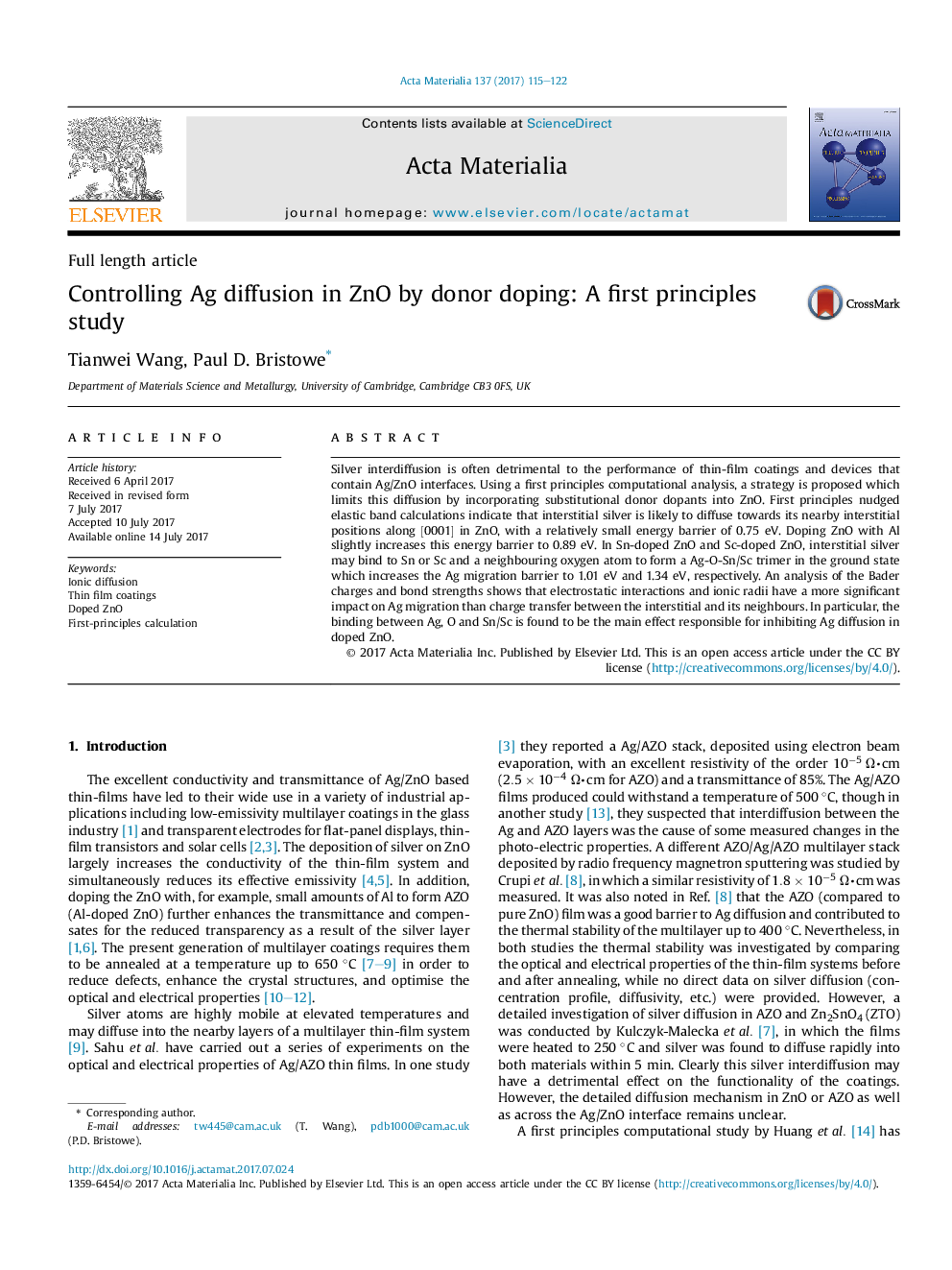| Article ID | Journal | Published Year | Pages | File Type |
|---|---|---|---|---|
| 5436008 | Acta Materialia | 2017 | 8 Pages |
Silver interdiffusion is often detrimental to the performance of thin-film coatings and devices that contain Ag/ZnO interfaces. Using a first principles computational analysis, a strategy is proposed which limits this diffusion by incorporating substitutional donor dopants into ZnO. First principles nudged elastic band calculations indicate that interstitial silver is likely to diffuse towards its nearby interstitial positions along [0001] in ZnO, with a relatively small energy barrier of 0.75Â eV. Doping ZnO with Al slightly increases this energy barrier to 0.89Â eV. In Sn-doped ZnO and Sc-doped ZnO, interstitial silver may bind to Sn or Sc and a neighbouring oxygen atom to form a Ag-O-Sn/Sc trimer in the ground state which increases the Ag migration barrier to 1.01Â eV and 1.34Â eV, respectively. An analysis of the Bader charges and bond strengths shows that electrostatic interactions and ionic radii have a more significant impact on Ag migration than charge transfer between the interstitial and its neighbours. In particular, the binding between Ag, O and Sn/Sc is found to be the main effect responsible for inhibiting Ag diffusion in doped ZnO.
Graphical abstractDownload high-res image (283KB)Download full-size image
